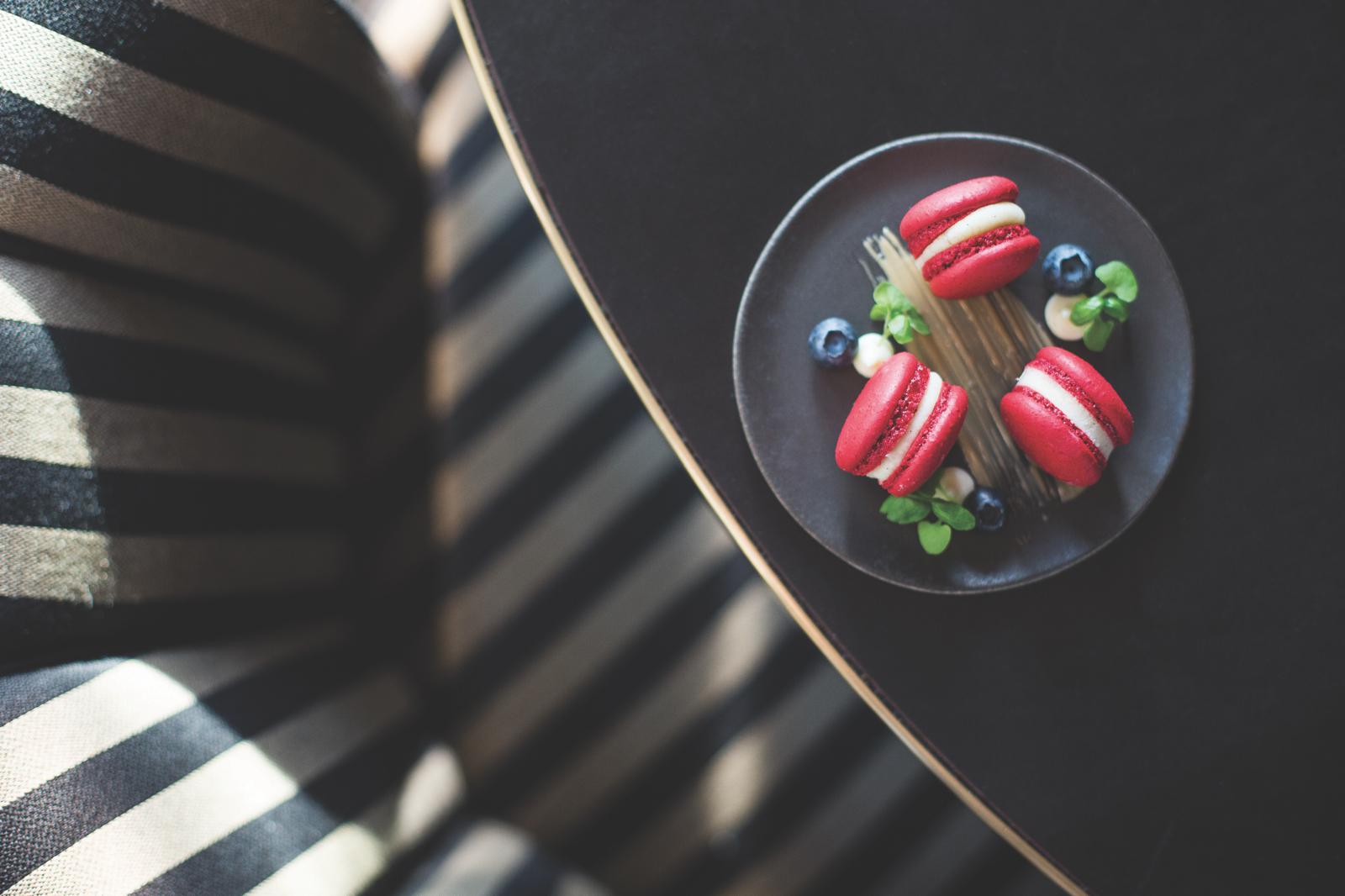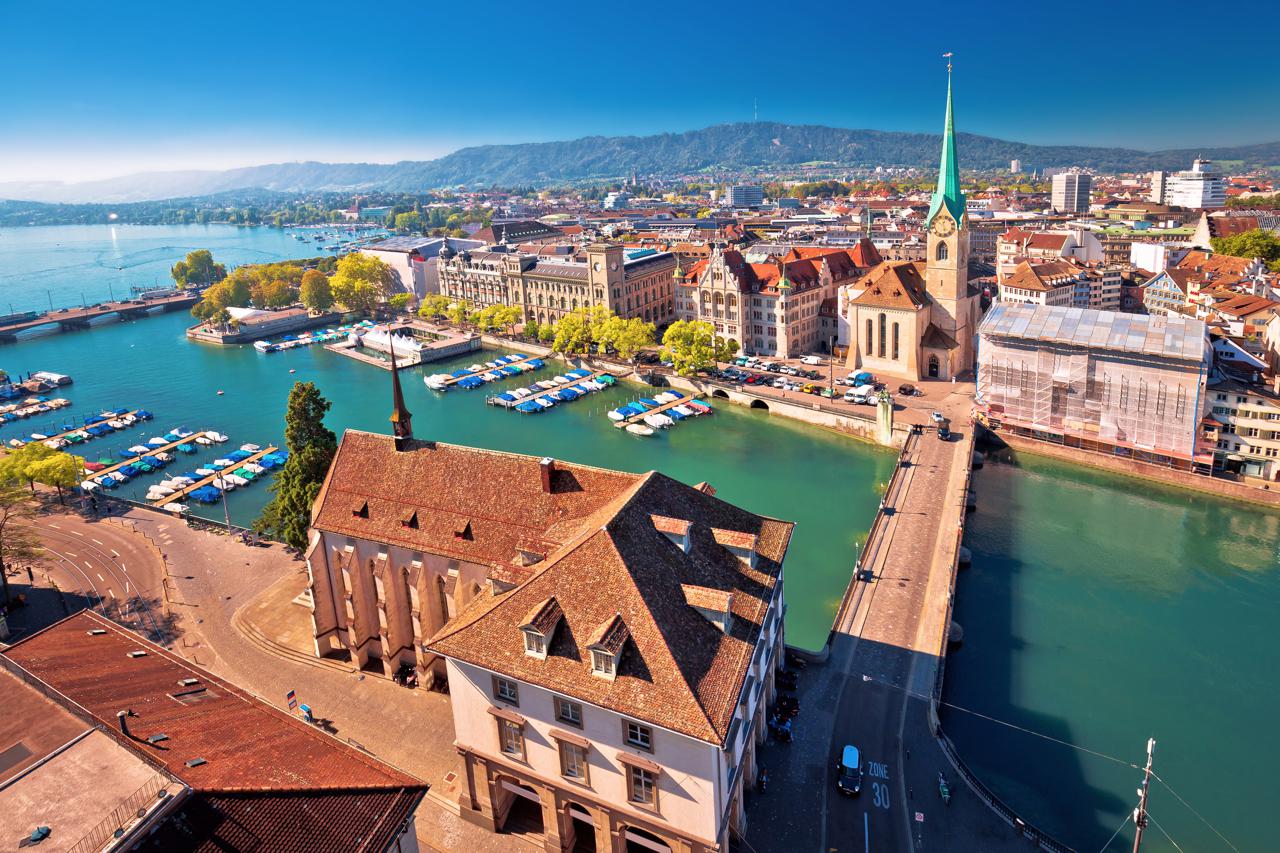Switzerland Art & Culture, Food & Wine
A Connoisseur’s Tour of Zurich


Zurich is Switzerland’s largest city yet offers a cocktail of intimate experiences in a glorious lakeside setting…
It may not be loud, hedonistic, flashy or overtly eclectic, but Zurich offers visitors a marriage of old and new, subtle and showy, natural and man-made, in an environment that’s as safe and clean as it gets.
As I exit Hauptbahnhof, Zurich’s central train station, into the pale morning sunlight, it’s immediately apparent that this is a city designed around water.
The Limmat and Sihl rivers emerge from the eponymous, banana-shaped lake the city sits at the top of, and the historic moat that once lapped against the city walls is now the pretty Schanzengraben canal.
In the summer months – tapering off with our arrival in late September – locals make a beeline to the badis (enclosed swimming areas) that dot these waterways.
Some double as lively bars, such as Rimini-Bar on the Schanzengraben, which is a men’s-only pool during the day and cocktail bar after dusk, complete with festoon lights and a large deck scattered with inviting cushions.
It’s a quick tram hop to reach our hotel, The Marktgasse, in the cobblestoned Neumarkt side of the Altstadt (Old Town), and on the east bank of the Limmat with its low-slung river boats.
Whatever your destination, there are multiple options for getting around Switzerland’s biggest city. Our morning walk through this historic quarter of winding alleys rings with echoes: transit van doors slamming; delivery workers’ banter; rubbish trucks grinding.
Come 11am, these vehicles must leave these pedestrianised streets, giving way to local workers flocking to lunch in the many small cafes and bistros.
Every few steps there’s another gem of a shopfront to be pored over: from the chocolate-box perfection of confectionary shops such as Teuscher and the city’s oldest cafe, Conditorei Shober, to the many shops bearing the insignia of the still-active local guilds (zunfte) that were once the backbone of Zurich society, to Cabaret Voltaire, where Hugo Ball and Emmy Hennings founded the Dada movement in 1916.
Our winding walk leads us up to the Lindenhof. This Roman fort turned peaceful plaza offers a quiet, linden tree-shaded refuge on what is turning into a very warm late September day, and a view over the Old Town, the Limmat, and the landmark Grossmunster church – the birthplace of the 16th-century Swiss-German reformation.
As a contrast, that afternoon we hop on the tram to Zurich West, to immerse ourselves in the epicentre of the city’s foray into modern urban development, in the form of converted industrial buildings.
Im Viadukt is a development of boutiques, bars and eateries stretching the length of the arches under the rail viaduct. It leads to a quarter built from shipping containers, presided over by Freitag Tower, a stack of 19 containers housing the innovative bag brand’s flagship store, and Frau Gerolds Garten, a space buzzing with locals happily relaxing in the organic gardens.
Over the tracks, Langstrasse is also starting to bloom; it retains a little of its former red-light grittiness, but this is the best place to come for eclectic shops, cafes and bars. Bordering the impressive Europaallee, an in-progress urban quarter, more retailers and innovative tech companies are moving into the area, so this is certainly a spot to watch.
In the boutique Widder Hotel, stylishly spanning eight Medieval townhouses just off the exclusive retail strip of Bahnhofstrasse, the Widder Bar & Kitchen has made a bold move, in this city that is very much still enamoured with white table linen, in overhauling the menu under young chef Tino Staub.
Gourmet dishes are designed for sharing and arranged by elements such as smoke, chilli and basil.
Architect Tilla Theus’ clever reworking of the space combines old (such as wooden beams from the early 1200s) and new. Live jazz is another drawcard. Downstairs, Boucherie AuGust offers a range of carnivorous delights befitting of this former butchers’ guildhouse.
Get a taste of old-world Zurich hospitality and pomp at Restaurant Zunfthaus zur Waag, in the charmingly old-fashioned wool, linen and hatters’ guildhouse overlooking the elegant Munsterhof square. This is the place to try the city’s signature dish Zurcher geschnetzeltes – veal in a creamy sauce – with two rosti, each as big as one’s head.
During special events, the restaurant turns the fountain in Munsterhof into a wine dispenser for guests: one part magic, one part twee, but on the whole, just jolly good fun. Food festivals are a relatively new adoption here, but Food Zurich proves this city can come together to celebrate eating and drinking as heartily as any other. Over the course of 11 days (May 16 to 26 in 2019), more than 100 events help the city celebrate everything from street food to fine dining.
Look out for other local specialties. Daintier than Parisian counterpart, the macaron, and filled with fresh buttercream, Sprungli’s famous Luxemburgerli come in flavours such as Champagne Deluxe. I highly recommend buying an assorted, beautifully boxed selection before a long train ride.
Biber are a honey-enriched soft gingerbread filled with almond paste, and making them the traditional way is a dying art. Look for Leibacher’s biber in cafes and delicatessens; they’re made by hand at a small factory in Zurich, founded by young brothers Claudio and Silvan Leibacher.
Claudio hand-carves the wooden blocks himself or delves into his collection of blocks that date back hundreds of years to give the top layer of the biber their signature decorative imprint.
Latest Articles
Don't miss the latest from Luxury Travel
